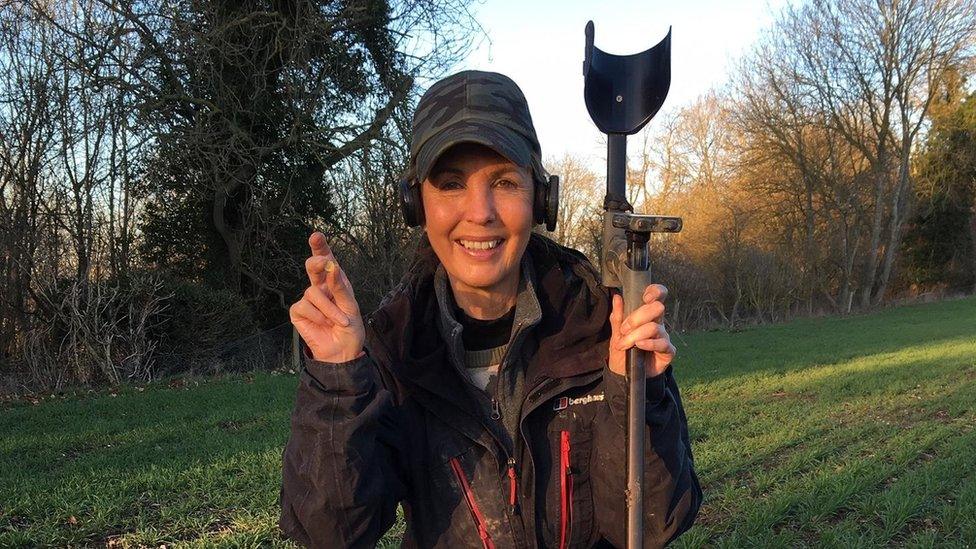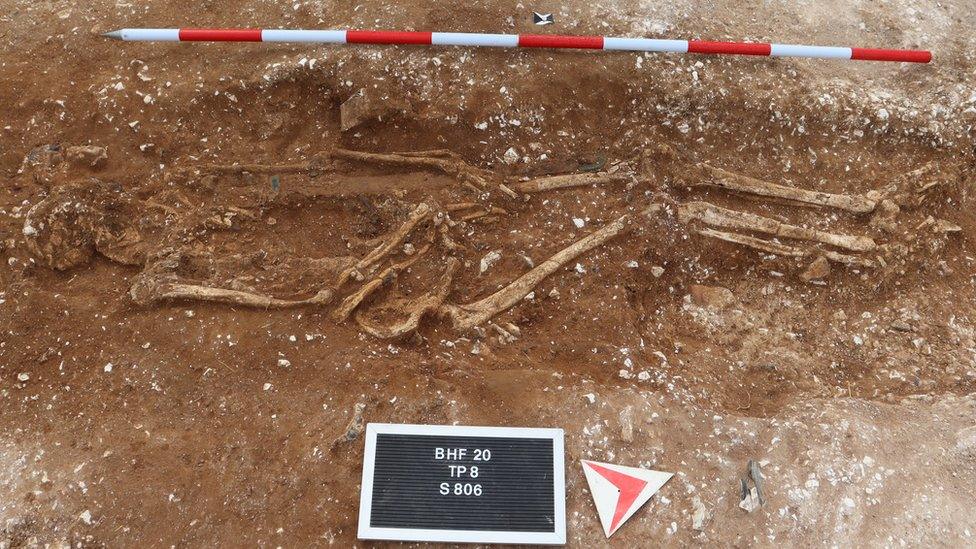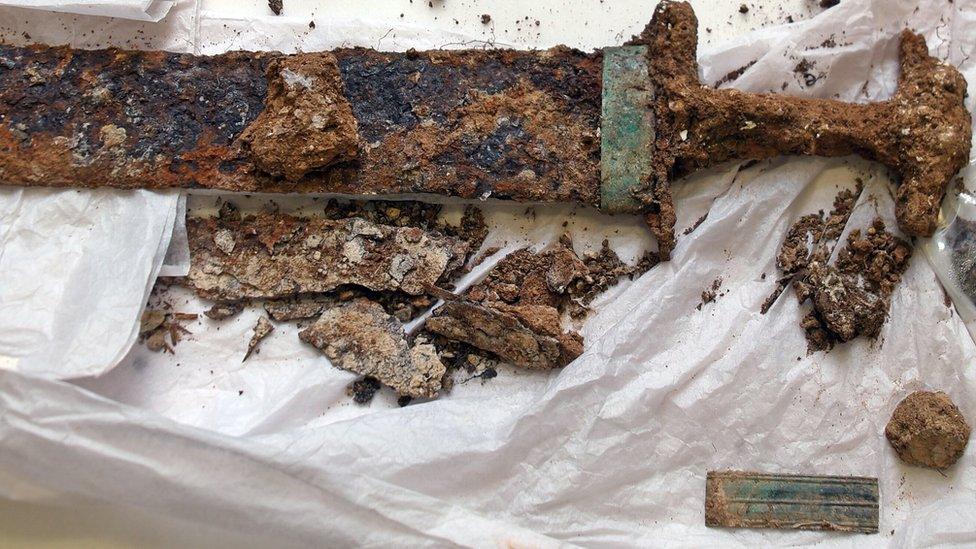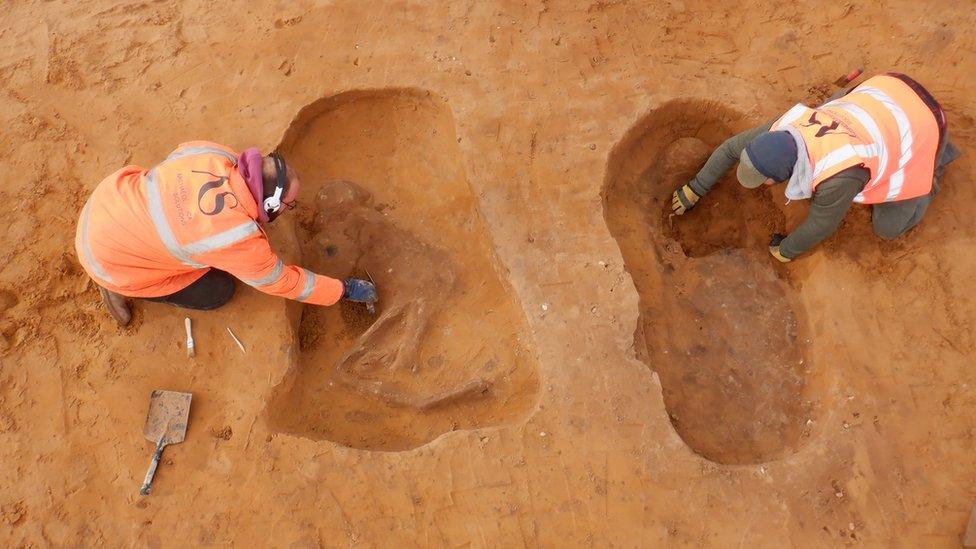Marlow warlord's remains part of 'key archaeological site'
- Published

The burial site is believed to date from the 6th century AD
The discovery of a warrior warlord's burial site could change historians' understanding of southern Anglo-Saxon Britain, according to archaeologists.
The 6ft "Marlow Warlord" was discovered in August close to the Buckinghamshire town.
An archaeological dig of the area took place after metal detectorists discovered two bronze bowls.
Dr Gabor Thomas said the find provided "new insights" into life after the collapse of Roman Britain.
The specialist in early medieval archaeology at the University of Reading said the burial suggested "people living in this region may have been more important than historians previously suspected".
It is believed the burial site dates from the 6th century AD.
You may also be interested in:
The Marlow Warlord was buried alongside an array of expensive luxuries and weapons, including a sword in a decorated scabbard, spears, and bronze and glass vessels.

Metal detectorist Sue Washington discovered bronze bowls at the site on her third visit there
The pagan burial had remained undiscovered for more than 1,400 years until metal detectorists Sue and Mick Washington came across it in 2018.
Along with other members of the Maidenhead Searchers metal detecting club they unearthed two bronze bowls and registered the discovery with the Portable Antiquities Scheme (PAS).
The PAS Finds Liaison Officer for Buckinghamshire recovered the bowls, along with a pair of iron spearheads.

The Marlow Warlord, whose remains were found at the site, was probably "a formidable warrior"
A more detailed investigation, led by the University of Reading's archaeology department, took place in August.
Dr Thomas said: "What we found exceeded all our expectations and provides new insights into this stretch of the Thames in the decades after the collapse of the Roman administration in Britain."

A sword and scabbard found at the site are believed to be among the best-preserved ever discovered
"This guy would have been tall and robust compared to other men at the time, and would have been an imposing figure even today," she added.
She said the way the site overlooked the Thames suggested he was "a respected leader of a local tribe and had probably been a formidable warrior in his own right".

Find BBC News: East of England on Facebook, external, Instagram, external and Twitter, external. If you have a story suggestion email eastofenglandnews@bbc.co.uk, external
- Published16 September 2020
